Blog Archives
Post navigation

KSN Energy
We have invested in ArcGIS within the field and on our desktops to inspect contractors' work, track quality control trends and contribute to the success of government energy-saving programmes.
KSN Energy uses ArcGIS on rooftops, in attics and on factory floors throughout Ireland to verify the quality of products installed under a variety of government-backed sustainable energy programmes. The company can now more intelligently assign inspectors to jobs, collect more accurate data and operate more efficiently to increase revenue.
ArcGIS Survey123 allows inspectors to complete complex surveys and gather accurate data on mobile devices
ArcGIS Workforce enables employees to be allocated to jobs based on location, job type, qualifications needed and priority
ArcGIS Dashboards reveal trends in quality control issues and improve the management of service level agreements
The Challenge
KSN Energy inspects newly installed heating systems, insulation, solar panels and other grant- funded energy-saving measures to ensure that they have been implemented in compliance with industry guidelines and regulations. With the introduction of a number of smaller grant-funded schemes and pilot programs, the company began to support the development of new inspection processes that did not benefit from digital assistance. These supplementary projects quickly increased from 10-12 site visits per year to over a thousand, posing two major challenges.
KSN Energy's primary goal was to find a way to convert highly complex paper-based surveys into mobile, digital operations. Second, a more efficient method of assigning Engineers with the necessary qualifications to inspections was required. “When we saw a demonstration of Esri's ArcGIS, we realised it could solve both of these challenges,” says David Cadwallader, Communications Manager at KSN Energy.
ArcGIS is a truly innovative technology that we are thrilled to be implementing across the organisation.
Michael Slevin – Director, KSN Energy
The Solution
KSN Energy started with ArcGIS Survey123, creating a few digital survey forms for internal use. Convinced that this versatile geographic information system (GIS) could meet its requirements, KSN Energy then hired Esri Ireland experts to help the company modernise its client-facing inspection process.
The task was not easy. The new Survey123 app had to not only support long and complex inspection surveys, but it also had to run on multiple devices and be usable in cramped, dark spaces like attics, roofs and factories. “The expertise of Esri Ireland experts helped us get to where we wanted to go,” Cadwallader says. “They were able to think outside the box, which was essential in this situation.”
Subsequently, KSN Energy and Esri Ireland used ArcGIS Workforce to develop a job management platform for assigning work to inspectors based on their location, credentials and survey type. The software uses priority settings and due dates to better control which jobs are completed and when and how many assignments of various schemes are assigned to each inspector. KSN Energy currently uses this work management platform to allocate jobs across all of the 10+ energy schemes that it handles, not just those that use Survey123.
KSN Energy has also begun using ArcGIS Dashboards to see the status of several sustainable energy initiatives at a glance. Internal dashboards provide employees with a clear view of how many inspections have been completed in a given week, month or year, as well as show trends in survey data. External dashboards provide clients with real-time, interactive updates on the status of inspections, allowing KSN Energy to reassure programme management that service level agreements (SLAs) are being met.
“Utilising ArcGIS across KSN Energy has meant that all staff are now aware of the status of all projects; our team can tailor reports for clients and management; and we have reduced our carbon footprint because we no longer use paper for reporting because everything is stored on the cloud,” says KSN Energy Director, Michael Slevin. “ArcGIS is a truly innovative technology that we are thrilled to be implementing across the organisation.”
Because we are better able to manage our resources across all schemes, we anticipate being able to complete more tasks and, as a result, increase our revenues.
David Cadwallader - Communications Manager, KSN Energy
The Benefits
Revenue growth from more effective job scheduling
For the first time, KSN Energy’s scheduler can see all jobs across all schemes on one map, making it easier for her to organise jobs spatially to optimise efficiency. The company can arrange large and small, domestic and commercial jobs, while providing all employees with the opportunity to meet specific goals and receive bonuses. “Because we are better able to manage our resources across all schemes, we anticipate being able to complete more work and, as a result, enhance our revenues,” Cadwallader adds.
Annual time savings of 2,000+ hours
KSN Energy's use of ArcGIS has resulted in significant time savings in areas such as task scheduling, report production, field surveying and data sharing with clients. Cadwallader emphasizes that “the option to generate custom reports directly from Survey123 has been a big time saver. It saves two or more hours per day for each of the four programmes we handle with Survey123, amounting to more than 2,000 hours per year. What was formerly a time-consuming operation is now as simple as clicking a button.”
Accurate survey data, gathered easily in the field
Using Survey123, inspectors can now collect accurate data far more easily than using paper-based survey forms. Photographs may be quickly linked to surveys; color-coded menus clearly highlight which elements of the survey remain unfinished; and a summary verification screen allows inspectors to double-check the quality of the information they have submitted. “Our inspectors' feedback has been unanimously positive,” says Quality Assurance Auditor Ian Donnelly. “We also have faith in the statistics because we know the inspectors went through a rigorous survey process.”
Clear visibility of recurring quality control concerns
KSN Energy now has the capacity to examine and analyse data in new ways, as well as discover reoccurring quality control issues, thanks to the development of ArcGIS Dashboards. It can, for example, detect recurring errors in the installation of individual measures and then offer specific training to improve the quality of future installations. Cadwallader observes that “ArcGIS makes it easy to spot trends that were always there but are now clearer.”
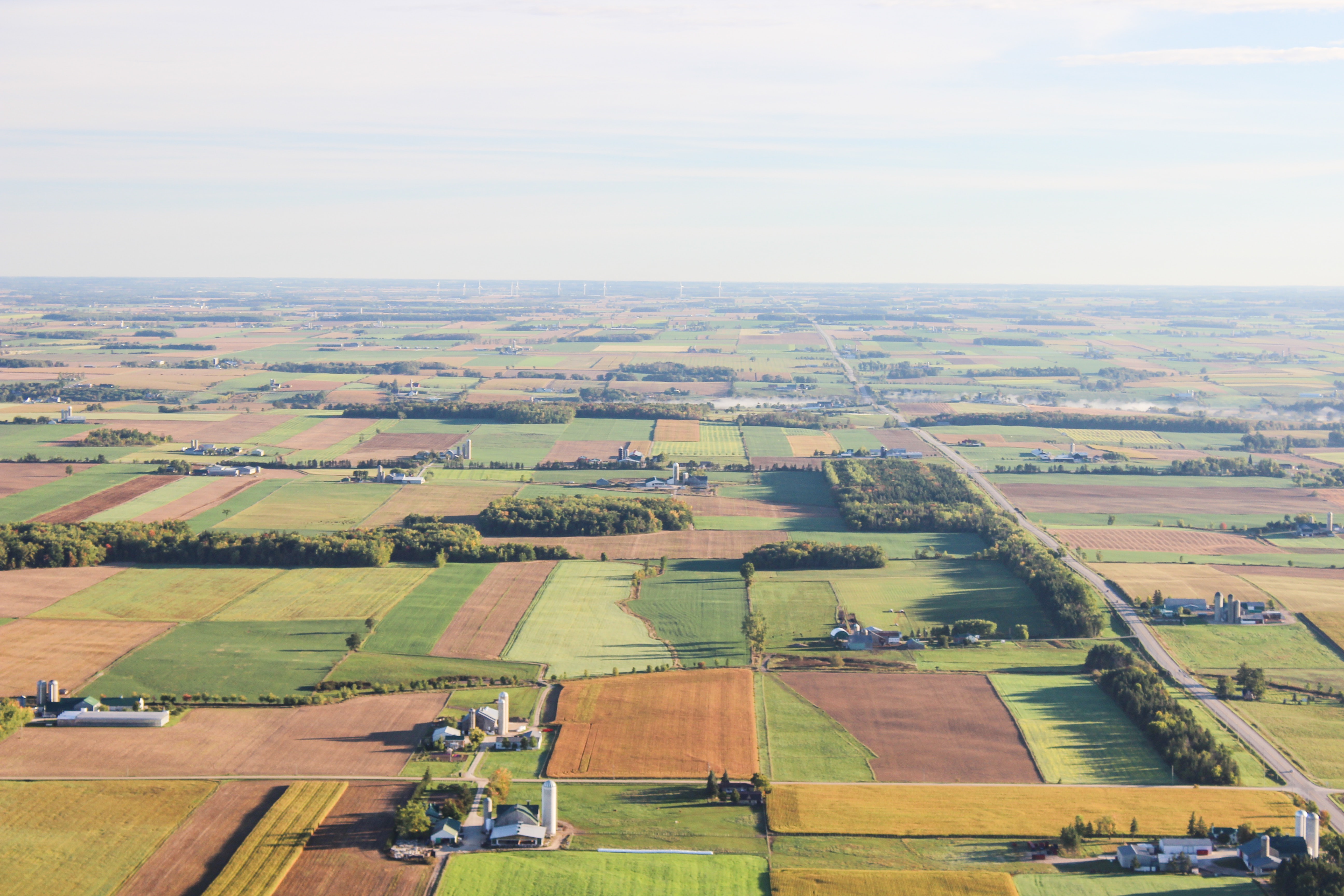
Department of Agriculture, Environment and Rural Affairs
The veterinary process for investigating and managing TB in Northern Ireland is now significantly more efficient, enabling DAERA to provide a high quality service for farmers.
The Veterinary Service Animal Health Group within DAERA has completely transformed its animal disease investigation process, swapping paper forms on clipboards for field-based survey apps and online dashboards. Using its new digital workflows, DAERA can now respond more quickly to disease outbreaks and instigate the most appropriate measures to prevent the spread of disease.
Animal Health and Welfare Inspectors collect epidemiological and spatial evidence at infected farms using ArcGIS Survey123
Veterinary staff view biosecurity & risk assessment scores and contiguous premises on a database available on ArcGIS web map apps
Managers monitor the progress of inspections and review risk summaries and patterns on an ArcGIS Dashboard
The Challenge
In more than thirty years, the animal disease investigation process in Northern Ireland had changed very little. The farm maps used by Animal Health and Welfare Inspectors during farm visits were still printed out on paper, taken out into fields in all weathers and annotated on farmhouse kitchen tables. In addition, a vast amount of data, on everything from the locations of diseased animals to the presence of badger sets and the number of neighbouring farms, was collected manually in paper-based forms on clipboards and written up into reports later. The whole approach was resource intensive, inefficient and in urgent need of digital transformation.
We transformed the data collection process – from clipboard to dashboard.
Alan Clements – Veterinary Officer, Veterinary Service and Animal Health Group, DAERA
The Solution
The Veterinary Service Animal Health Group (VSAHG), a business area of the Department of Agriculture, Environment and Rural Affairs (DAERA), appointed Esri Ireland to help it modernise the disease investigation process. Throughout the project, Esri Ireland worked closely with Veterinary Officers and DAERA’s internal GIS team, passing on knowledge of how to optimise the use of the ArcGIS solutions available to DAERA through its Enterprise Agreement. Esri Ireland helped to capture business requirements and build a suite of ArcGIS web apps resulting in field-based solutions and dashboards.
Animal Health and Welfare Inspectors now use ArcGIS Survey123 on iPads to gather evidence to investigate outbreaks of Tuberculosis (TB). This interactive, digital, form-based survey replaces 6-page, paper-based questionnaires and automatically generates a biosecurity score for each farm, based on a pre-determined weighting of numerous farm practices. It also generates a risk score for each separate parcel location, based on a pre-determined weighting of know hazards. Another Survey123 workflow has been developed to survey hygiene practices in meat processing plants, and further similar mobile data capture solutions are planned, including one for managing outbreaks of Avian Influenza as a template for other Epizootic Diseases.
All data collected in the field is instantly uploaded to ArcGIS Enterprise, known internally as the DAERA Information Hub, and shared via ArcGIS web apps. For example, veterinary staff use a web app to view TB surveys and access all the information they need to make decisions about any follow-up actions to limit the spread of disease. They can use the web app to search by herd number or by location, view TB reports in pop-up boxes and export data into reports. A similar web app displays the locations of avian influenza outbreaks, making it easy for veterinary staff and other stakeholders to see where cases have been detected and which farms are within designated surveillance areas. A public external viewer is now available for poultry keepers to see the detail of all Control Zones and Trade Restriction Areas on the DAERA website.
Finally, information on the progress of inspections is displayed in ArcGIS Dashboards. Managers can see, at a glance, how many TB risk assessments have been completed, what the level of risk is and how many further inspections are outstanding. Common sources of infection and the important hazards can now be easily quantified, and the ArcGIS Dashboard provides easy access to all the information managers need to manage TB inspections across the whole of Northern Ireland. “We have transformed the data collection process – from clipboard to dashboard,” says Alan Clements a Veterinary Officer in the Veterinary Service and Animal Health Group. “We shall soon be adding farm maps using the ArcGIS Collector app, allowing digital annotation of relevant spatial risks.
The use of ArcGIS moves risk assessments away from opinion and towards impartial evidence.
Alan Clements - Veterinary Officer, Veterinary Service and Animal Health Group, DAERA
The Benefits
Faster animal disease interventions
The end-to-end process, from surveying a farm to evaluating the data collected, determining follow-up actions and arranging interventions, can now be completed far faster than before. The ArcGIS web apps provide veterinary staff with instant access to all the information they need to make their professional judgements more quickly and ensure the most appropriate action is taken to halt the spread of disease in Northern Ireland.
More efficient farm inspections
Animal Health and Welfare Inspectors no longer have to write up their reports and don’t have to spend as much time travelling to and from the office to collect printed maps or to deliver reports. Consequently, they can work far more efficiently and complete significantly more inspections in the same amount of time.
Consistent assessment of animal health risks
The new ArcGIS-based survey method allows animal health risks to be recorded and weighted in a standardised way. DAERA policies can then be applied fairly and consistently across all farms throughout Northern Ireland, without regional variations. As Clements observes, “The use of ArcGIS moves risk assessments away from opinion and towards impartial evidence. This evidence based approach is a more solid base for TB policy decisions.”
Clear visibility of ‘the bigger picture’
The new ArcGIS-driven process for disease investigations enables the Veterinary Service and Animal Health Group to see what Clements calls “the bigger picture.” Managers can use the ArcGIS dashboard to better manage and monitor the work of over 100 inspectors working across the whole of Northern Ireland. Meanwhile, veterinary staff can use ArcGIS web apps to access data on up to 6,000 TB inspections per year, as well as outbreaks of Avian Influenza, and better understand animal health risks.

Transport for West Midlands
Esri’s ArcGIS Dashboard enables us to share live and crowd-sourced data with the police and 17 partner organisations so that we can all work together to minimise congestion and improve the quality of journeys by road, rail, bus and tram.
In a highly ambitious and collaborative project, Transport for West Midlands has developed a state-of-the-art ArcGIS Dashboard that combines live transport data from 17 public and private sector partners with crowd-sourced information. Using this dashboard, the organisation, its partners and the police can now intervene quickly to minimise the impact of congestion, improve journey experiences and support the growth of the local economy.
Esri’s ArcGIS Dashboard provides a single, real-time view of all transport issues across the road, rail, bus and tram networks
The transport duty managers and partner organisations have instant access to real-time and crowd-sourced data to help them make fast decisions
The ArcGIS solution was developed in just two months and is now being extended to incorporate added functionality
The Challenge
In the West Midlands, a booming economy and a rapidly growing population are placing unprecedented pressure on public transportation services and the local road network. £4.4 billion is currently being invested in the region on a range of road, tram, bus and rail network improvements, which are expected to alleviate this congestion in the future. However, in the interim, construction traffic and building works for new rail stations and tram services are creating added disruption and exasperating the challenges.
In line with its strategy to create ‘Movement for Growth’, Transport for West Midlands (TfWM) wanted to help local authorities, public transport operators, Highways England and the police to better manage planned and unplanned transportation network disruptions. It aimed to support growth in the local economy, by making it easier for people and goods to move around the area.
“Our dashboard gives us the real-time and analytical information we need to improve movement throughout the region and support economic growth, by enabling a proactive response to the causes of congestion.”
Stuart Lester, Data Insights Manager, Transport for West Midlands
The Solution
TfWM used Esri’s ArcGIS Dashboard to bring together real-time transport data from seventeen local partners, including local authorities, commercial rail, tram and bus operators, Network Rail and Highways England. The organisation then used ArcGIS GeoEvent Server and FME Workbench to enhance and integrate this live data, as well as geocode railway stations and bus stops. TfWM also used the Waze Live Alerts Layer in ArcGIS to incorporate crowd-sourced data about slow-moving traffic and harvested information about disruption to tram services from Twitter.
According to Stuart Lester, Data Insights Manager at TfWM, “The development of the Esri solution was fast and agile. We had a trial version, incorporating crowd-sourced and third party data, up and running within just two months, which helped us to gain the buy-in and confidence of partners,” he says.
TfWM’s dashboard is now displayed on a huge screen at TfWM’s new Regional Transport Coordination Centre and can be viewed online by TfWM managers from any location. The dashboard is also used by partners, in their own local operations centres including, Highways England, local authorities, transport providers and emergency services, giving everyone the same comprehensive overview of the status of all transportation services and roads, across the entire region.
By continuing to leverage the capabilities of ArcGIS, TfWM is now extending the functionality of its dashboard to enable it to generate automatic alerts about transport issues for the general public, using links to Satnavs, radio and TV channels, social media and subscription-based news services. All of the live information presented in the dashboard is stored in ArcGIS, and a trial project is currently underway to analyse this data using ArcGIS Velocity tool in order to gain insight into long term transport patterns and changes in commuter behaviour.
“The dashboard will play a pivotal role when Birmingham hosts the Commonwealth Games in 2022. It will enable us to manage the impact of millions of additional visitors to the region, ensuring they have a pleasant travel experience, while minimising disruption for the people who live and work in the West Midlands every day.”
Stuart Lester, Data Insights Manager, Transport for West Midlands
Benefits
A holistic view of the entire transport network
For the first time, all local authorities, the police and transportation providers have a holistic view of all transportation issues, on roads, railways, tram and bus services, across the entire region, all on one screen. Consequently, if a delivery vehicle obstructs road traffic, or a train service is delayed, all duty managers can instantly see the issue and anticipate the impact on other local roads and alternative public transport.
Better travel experiences, across all modes of transport
With instant access to live information via the dashboard, duty managers at TfWM’s Regional Transport Coordination Centre, and other local operations centres, can react quickly to unplanned incidents, to improve the travel experience for West Midland’s 2.8 million residents. For example, they could guide partners to re-phase traffic lights to alleviate congestion on a diversion route or issue an alert to warn commuters about a cancelled train. “Travel disruptions are inevitable, but we can now intervene quickly to alleviate the situation and provide people with good quality, timely information so that they can decide when and how to travel to make best use of their time,” Lester says.
A reliable transport infrastructure for economic growth
The dashboard will help TfWM to support the local economy, by enabling it to reduce disruption from the £4.4 billion of infrastructure projects taking place in the region. In particular, it aims to make journey times more predictable, so that commercial vehicles can deliver components to just-in-time manufacturing plants on schedule, and reduce the cost of congestion for the region’s businesses, which was estimated by INRIX, in 2018, as being £994 for every driver in Birmingham. “Our dashboard gives us the real-time and analytical information we need to improve movement throughout the region and support economic growth, by enabling a proactive response to the causes of congestion,” Lester says.
Effective planning for high-profile events
The insight that TfWM will gain, over time, from analysing live traffic data will help all seventeen partners, and the police, to put effective plans in place for special events, when COVID-19 travel restrictions are relaxed and large events can take place safely again. “The dashboard will play a pivotal role when Birmingham hosts the Commonwealth Games in 2022,” says Lester. “It will enable us to manage the impact of millions of additional visitors to the region, ensuring they have a pleasant travel experience, while minimising disruption for the people who live and work in the West Midlands every day.”

Sport England
ArcGIS helps Sport England to target interventions and funding to make it easier for everyone to engage in sports and physical activity.
Sport England is using ArcGIS to identify gaps in the provision of sporting facilities nationwide and allocate funding to projects that break down inequalities in physical activity and sport participation. The organisation has also integrated ArcGIS web maps and spatial data services to key investment and planning business systems to establish data capture standards, reporting and visualisation.
ArcGIS and spatial data help Sport England allocate millions of pounds of National Lottery funding and tackle inequalities
Sport sector organisations and local authorities use Sport England’s ArcGIS-based solutions to understand supply and demand for sports facilities and target audiences
Significant time and data quality improvements are achieved by using Esri UK Premium Data and National Data Services
The Challenge
As part of a new ten-year strategy called ‘Uniting the Movement’, Sport England aims to ‘transform lives and communities through sport and physical activity’. Launched in 2021, this wide-ranging initiative aims to address inequalities in physical activity and sport participation, making it possible for everyone to live more active, healthier lives.
To achieve this vision, Sport England needs to be able to visualise and analyse vast amounts of data, so that it can make fair and appropriate decisions about where to allocate funding and target interventions. It also needs to share its data with hundreds of local authorities and sporting associations, to help everyone work together to ensure the right sporting opportunities are established, in the right places, for the people who need them most.
“ArcGIS helps us to target funding more precisely to make sports facilities and activities available to people in communities where there is currently low participation in sport and physical activity.”
Mark Critchley, Head of GIS, Sport England
The Solution
Sport England and its contractors make extensive use of Esri’s geographic information system (GIS) technology, ArcGIS, in a range of tools, used both internally within Sport England and externally by organisations in the wider sports industry. Furthermore, Sport England subscribes to Premium Data and National Data Services from Esri UK, giving it live access to accurate, current datasets in pre-prepared formats that are ready to use in ArcGIS. The key data sets it leverages include: contextual basemaps and geodemographic data such as census, health, deprivation and socio-economic data.
One of the organisation’s most pivotal tools is its Planning and Information Management System, a bespoke solution created by embedding ArcGIS capabilities into a Salesforce solution. The addition of ArcGIS improves the accuracy of data captured and the visualisation of data in a spatial context, allowing Sport England’s planners to view and evaluate planning applications that affect existing sports fields in the context of other relevant geospatial data and aerial photography.
A second tool is Sport England’s Investment Management System. Also a Salesforce-based solution, this tool utilises ArcGIS capabilities, via the ArcGIS JavaScript API. Used internally, it allows investment managers to capture information accurately, visualise data and then check and challenge funding applications to make sure they are delivering value to target audiences, including deprived communities, in line with its vision.
Another key tool is Active Places Power, which is an ArcGIS-based web solution primarily used by the wider sports sector, including organisations like the Football Foundation. Provided free of charge, the tool enables all users to view detailed data from the National Sport Facility Database and analyse it spatially, to improve understanding of the catchment area for existing facilities, taking into account walking, cycling and driving catchments and demographic data.
Most recently, Sport England has launched a Local Area Insights tool, providing the sports industry with an intuitive way to visualise and analyse open data, to build up a better understanding of communities and identify the location of target audiences. Built using Esri’s InstantAtlas and consuming live data from Esri UK’s National Data Service, the solution is fully integrated into the Sport England website, with its branding and accessibility standards.
“Esri UK’s Data Services provide Sport England with a single source of accurate, up-to-date mapping and geospatial data that we can use for many different solutions, significantly reducing our data management overheads and freeing up our time to deliver business-focused solutions.”
Mark Critchley, Head of GIS, Sport England
Benefits
Evidence-based allocation of funding
By using ArcGIS to visualise and analyse multiple datasets on interactive maps, Sport England can more easily identify the locations and communities where interventions will have the greatest impact. It can then allocate targeted grant awards, which amount to millions of pounds of National Lottery funding on an annual basis, to projects that will help break down inequalities in access to sports – particularly in areas with high levels of deprivation. “ArcGIS helps us to target funding more precisely to make sports facilities and activities available to people in communities where there is currently low participation in sport and physical activity,” said Mark Critchley, head of GIS at Sport England.
Shared understanding of gaps in sporting provisions
Organisations of all sizes, from England Athletics to smaller organisations such as individual sports clubs, can use the ArcGIS-based online tools developed by Sport England to better understand demand for their sport, area by area. They can see gaps in provision, to understand how best to tailor their sport offerings and plan effectively for the future. With Critchley adding: “Sporting organisations and local authorities can use our free online ArcGIS tools to direct their strategic thinking about what facilities are needed in specific communities and justify their applications for funding.”
Effective challenges to proposed developments on sports fields
Integrated in the Planning and Information Management System, ArcGIS supports Sports England in its statutory duty to respond to planning applications that affect playing field land. Using the data visualisation capabilities of ArcGIS, Sport England can see how proposed developments will affect existing sports fields, see what other sports facilities are in the area and gather evidence to protect existing provision or secure new provision for new housing developments.
Time saving and improved data quality
By subscribing to Esri UK’s Data Services, Sport England is able to deliver a wide range of GIS services, including large volumes of key geospatial data, despite having a small in-house GIS team. Accurate, consistent and current data is streamed directly into Sport England’s applications, saving time and allowing the organisation to use the same data resources in a standardised way, across all its ArcGIS-driven tools. Critchley said: “Esri UK’s Data Services provide Sport England with a single source of accurate, up-to-date mapping and geospatial data that we can use for many different solutions, significantly reducing our data management overheads and freeing up our time to deliver business-focused solutions.”
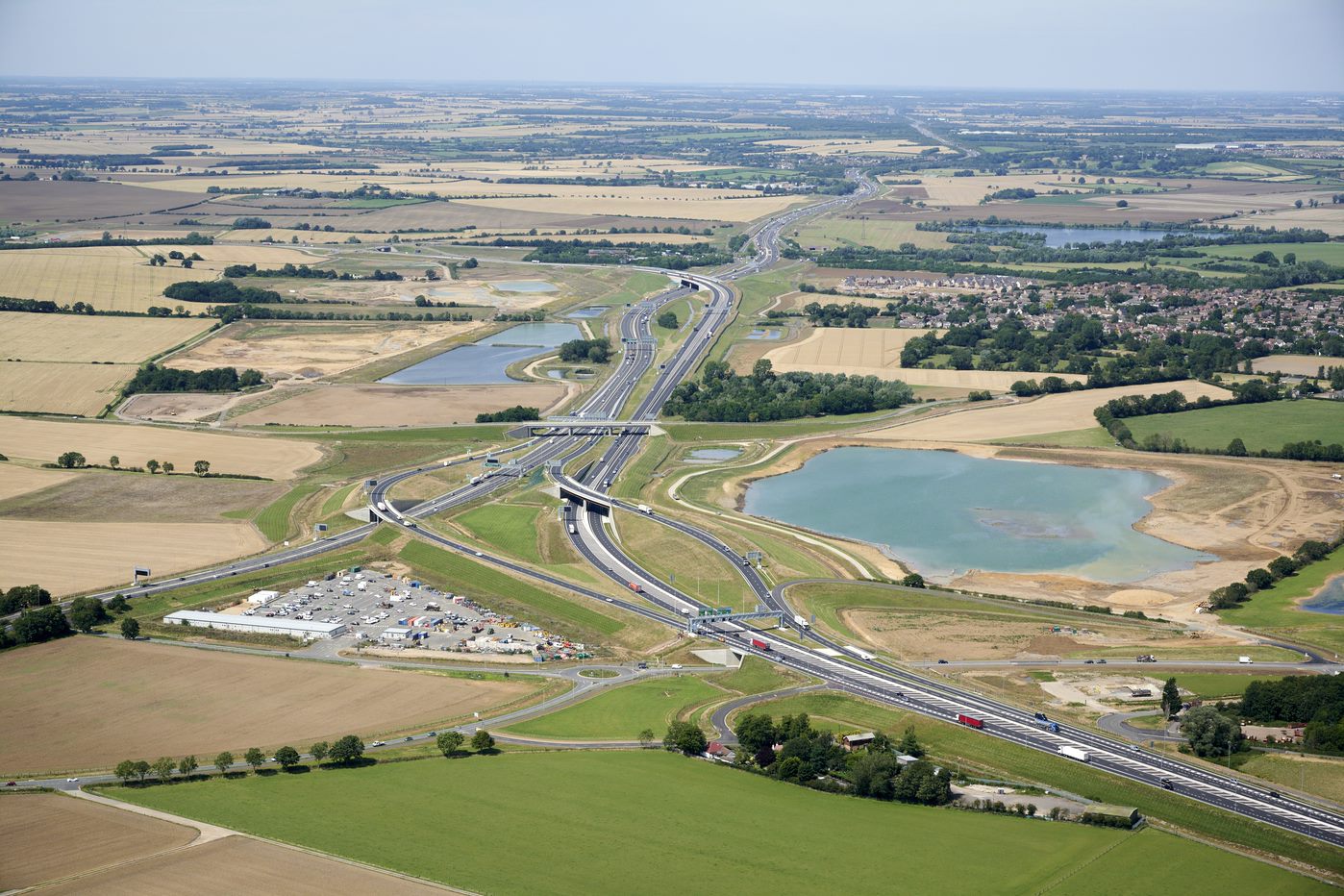
Costain
Our enterprise-wide deployment of ArcGIS is delivering substantial cost and time savings and enabling safer, faster, better, greener and more efficient programme delivery for our clients.
Costain uses ArcGIS as a strategic enterprise tool to help it deliver cost-effective and sustainable infrastructure projects. By making ArcGIS solutions available to all employees from engineers and environmentalists to asset inspectors and project managers, the organisation is making multi-million pound cost savings, accelerating processes and delivering pioneering biodiversity schemes.
All project information, including BIM and third party data is made accessible to teams via ArcGIS web apps
Environmental surveys and asset maintenance checks are carried out on mobile devices using ArcGIS field apps
Live data from the field is analysed and shared on ArcGIS Dashboards to improve decision making
The Challenge
Large infrastructure projects depend on large volumes of geospatial information. Designers, engineers, planners, environmentalists and project managers all need to be able to collect, analyse and share data on everything from the locations of assets to biodiversity on construction sites. Costain decided to expand its use of geographic information system (GIS) technology to put geospatial data at the heart of its business and use it even more effectively to enable safer, faster, better, greener and more efficient programme delivery.
“We estimate that we save millions of pounds by using ArcGIS across our large infrastructure projects, which enables us to make competitive bids and deliver even more cost-effective services for our clients.”
Sophie Stouki, Group Head of GIS, Costain
The Solution
Costain started by building a single portal for all geospatial information, for the entire organisation, using ArcGIS Enterprise. Then, it developed a series of ArcGIS web apps to provide specific groups of employees with the capabilities they need to access data pertinent to their contracts and perform their jobs.
Chief amongst these web apps is a solution called ‘Costain on a map’ that provides all employees with a gateway to the company’s growing reservoirs of geospatial data, as well as data from other systems, such as HR and Building Information Modelling (BIM), as well as remote sensors and unmanned aerial vehicles (UAVs). “The ability of ArcGIS to collate data from many internal and third party sources and make it available to lots of people via a web browser is really powerful,” says Sophie Stouki, Group Head of GIS at Costain.
Costain also developed a suite of ArcGIS field apps, for collecting and viewing data on mobile devices about everything from the locations of trees and archaeology to the condition of assets and the views of stakeholders.
This live data is then displayed on ArcGIS Dashboards, where it can be used for reporting and data analysis.
ArcGIS is currently used by around 1,200 employees including:
- Designers for visualising their designs in 2D and 3D in their geographic context
- Engineers for better understanding how schemes interact with the topology of the area
- Environmentalists for carrying out biodiversity and archaeology surveys in the field and analysing their findings
- Project managers for scheduling works in the field and understanding which assets will be where at each phase of the project
- Planners for improving their understanding of the implications of delayed deliveries or bad weather
- Road inspectors for managing 150,000 assets as part of a large highways and road maintenance contract
- Contact centre staff for responding to telephone queries, noting asset defects and passing on information to maintenance teams.
“ArcGIS allows us to be smarter in how we collect, analyse, and visualise environmental data, making the implementation of innovations that reduce environmental impacts more feasible on a larger scale.”
Katie Dawson, GIS Lead for Environment, Costain
Benefits
Multi-million pound cost savings
The enterprise-wide adoption of ArcGIS has eliminated the need for Costain to pay external contractors to create GIS apps. Furthermore, everyone in the organisation, from engineers to ecologists, has easy access to the live data they need to make better decisions and deliver quality projects, quickly and more cost effectively. “We estimate that we save millions of pounds by using ArcGIS across our large infrastructure projects, which enables us to make competitive bids and deliver even more cost-effective services for our clients,” says Stouki.
Substantial time savings
Throughout the business, teams are now able to work even more efficiently, both in the field and in the office. For instance, a team of ten environmental specialists has saved as many as 18 hours a week by using ArcGIS to gain rapid access to environmental data, reducing the duration of a key client project. One of Costain’s asset maintenance processes is significantly faster than before, due to the seamless integration and instant availability of data from the field. Furthermore, the use of ArcGIS apps, field-based solutions, dashboards and other geospatially-enabled systems has saved time in the delivery of key utility works.
More effective collaboration
ArcGIS significantly improves collaboration in large, multi-disciplinary teams by improving access to project data and facilitating communication. For example, Costain has used ArcGIS Survey123 to develop a form-based method of allowing teams to submit feedback on project designs. “Communication between project teams is now much faster than with paper-based processes,” Stouki says.
Smarter implementation of biodiversity schemes
Environmentalists use ArcGIS to collect habitat data in the field, model how the environment will be impacted by projects and devise plans to reinstate habitats once construction has been completed. “ArcGIS allows us to be smarter in how we collect, analyse, and visualise environmental data, making the implementation of innovations that reduce environmental impacts more feasible on a larger scale,” says Katie Dawson, GIS Lead for Environment at Costain.
Reduced risk of redesigns and delays
With the wealth of data that can be accessed and visualised through ArcGIS, designers can create feasible designs from the outset and, if needed, make timely changes along the way that do not impact project schedules and costs. Equally, planners can view live data on shipments and weather within ArcGIS to better plan the sequence of works. “The insight that ArcGIS provides helps us to mitigate the risks of additional design costs and project delays,” Stouki says.

NHS South, Central and West
The use of ArcGIS for geospatial analysis, temporal modelling and data sharing helped the NHS to plan and deliver a world-leading COVID-19 vaccination programme.
When the NHS faced the enormous challenge of vaccinating the entire UK population within an ambitious timescale, geospatial analysis brought clarity to the planning process. NHS South, Central and West (SCW) used ArcGIS to help it locate vaccination sites, allocate the supply of vaccines, avoid vaccine wastage and monitor vaccination up-take.
The best locations for vaccination sites were modelled using ArcGIS Pro and decisions were made using ArcGIS web apps
ArcGIS dashboards were created to highlight key information and statistics to decision-makers in a lightweight, easy to read format
The up-take of vaccinations in deprived areas or harder to reach communities is highlighted in ArcGIS Story Maps to inform targeted interventions
The Challenge
The COVID-19 pandemic was the biggest challenge faced by the NHS in its 70+ year history. Not only did the NHS need to treat high numbers of exceptionally ill patients with a highly infectious disease, but it also had to plan and implement a nationwide vaccination programme on a scale and at a pace never imagined before. The geographic information system (GIS) team at NHS South, Central and West (SCW) initially received a simple request to map potential vaccination sites in the South West, but this led to the realisation that GIS technology could do so much more.
“Through our use of ArcGIS, we have supported the NHS to deliver a massive, coordinated effort and vaccinate millions of people in the UK in a planned and efficient way.”
Trevor Foster, Associate Director, Geographic Intelligence and Mapping Service, NHS South, Central and West
The Solution
In what was its first year of using Esri’s ArcGIS system, SCW used ArcGIS Pro to conduct geospatial analyses and build and share sophisticated map-based models, showing the locations of potential vaccination sites, the number of people in the local population by age and travel times to vaccination sites. This analysis activity was quickly expanded to cover three NHS regions – the South West, East and South East – an area with a total population of over 21 million people.
SCW created an ArcGIS web app to allow NHS decision-makers in the three regions to view potential vaccination sites and test possible site combinations to see which options provided the best accessibility for the local population. Easy to use, this web app allowed decision-makers to make well-informed choices themselves, very quickly, without waiting for analyst support. The ArcGIS web app was used in live planning workshops, with multi-disciplinary teams, working at speed together to make key planning decisions based on robust and accurate analysis.
SCW also took advantage of the temporal modelling capabilities of ArcGIS to create demand and supply phasing models to calculate how much vaccine would be needed by each vaccination site, based on the number of people in the local population eligible for a vaccination, in each phase of the vaccination roll-out. The output of this temporal modelling was displayed in ArcGIS Story Maps and Dashboards, giving NHS managers clear visibility of the data they needed to allocate the supply of vaccine appropriately.
The use of ArcGIS expanded very rapidly during the pandemic and, within months, SCW was providing GIS analysis to support the NHS at a national level, as well as support healthcare professionals working locally in specific regions and ICS systems. Now, the organisation is building on its experience to help the NHS leverage geospatial analysis as part of ‘business as usual’ activities.
“The use of ArcGIS to plan house-bound vaccinations reduced vaccine wastage, but also made the whole process much more efficient, to avoid wasting the time of healthcare professionals.”
Ian Maxfield, Associate Head of Geographic Intelligence and Mapping, NHS South, Central and West
Benefits
Effective planning of vaccination roll-out
The use of geospatial analysis supported the NHS to plan a vaccination programme on an unprecedented scale. SCW modelled the optimum locations for vaccination sites and adjusted this model iteratively as the Government’s roll-out strategy evolved. It also worked at a national level, advising NHS England which people to invite for vaccinations, when and where to send them, based on individuals’ locations, ages, travel times to vaccination centres and the availability of vaccine. “Through our use of ArcGIS, we have supported the NHS to deliver a massive, coordinated effort and vaccinate millions of people in the UK in a planned and efficient way,” says Trevor Foster, Associate Director, Geographic Intelligence and Mapping Service at SCW
Reduced wastage in vaccine supply
SCW also modelled the optimum routes for vaccinating housebound people in Somerset, to allow district nurses and GPs to reach as many vulnerable housebound people as possible, as quickly as possible, while ensuring all available vaccines were used. “The use of ArcGIS to plan housebound vaccinations reduced vaccine wastage, but also made the whole process much more efficient, to avoid wasting the time of healthcare professionals,” notes Ian Maxfield, Associate Head of Geographic Intelligence and Mapping at SCW.
Targeted action to reduce health inequalities
SCW is currently using ArcGIS to analyse areas where there is low up-take of COVID-19 vaccinations. It shares this information in interactive ArcGIS Story Maps to help NHS decision-makers plan targeted interventions that will encourage more people to get vaccinated and prevent health inequalities. Reissued weekly with up-to-date data, the Story Map displays socio-economic data on areas of deprivation and highlights changes over time, so the NHS can monitor the impact of its interventions. ArcGIS and Story Maps will be used to support other similar health improvement schemes in the future.
Confident decision-making in NHS planning
Beyond the vaccination programme, SCW is using ArcGIS to support decision-making in the introduction of new health initiatives and the management of ongoing NHS services. For example, ArcGIS is being used to plan the logistics for a new saliva-based test for routine, asymptomatic COVID-19 testing at two hospital trusts in Devon and Cornwall. ArcGIS is also being used to help reallocate patients to alternate GP practices, following the closure or merger of practices, based on travel times. SCW has used ArcGIS Survey123 to collect patient preferences and will be introducing new dashboards to help NHS decision-makers make timely, confident decisions.
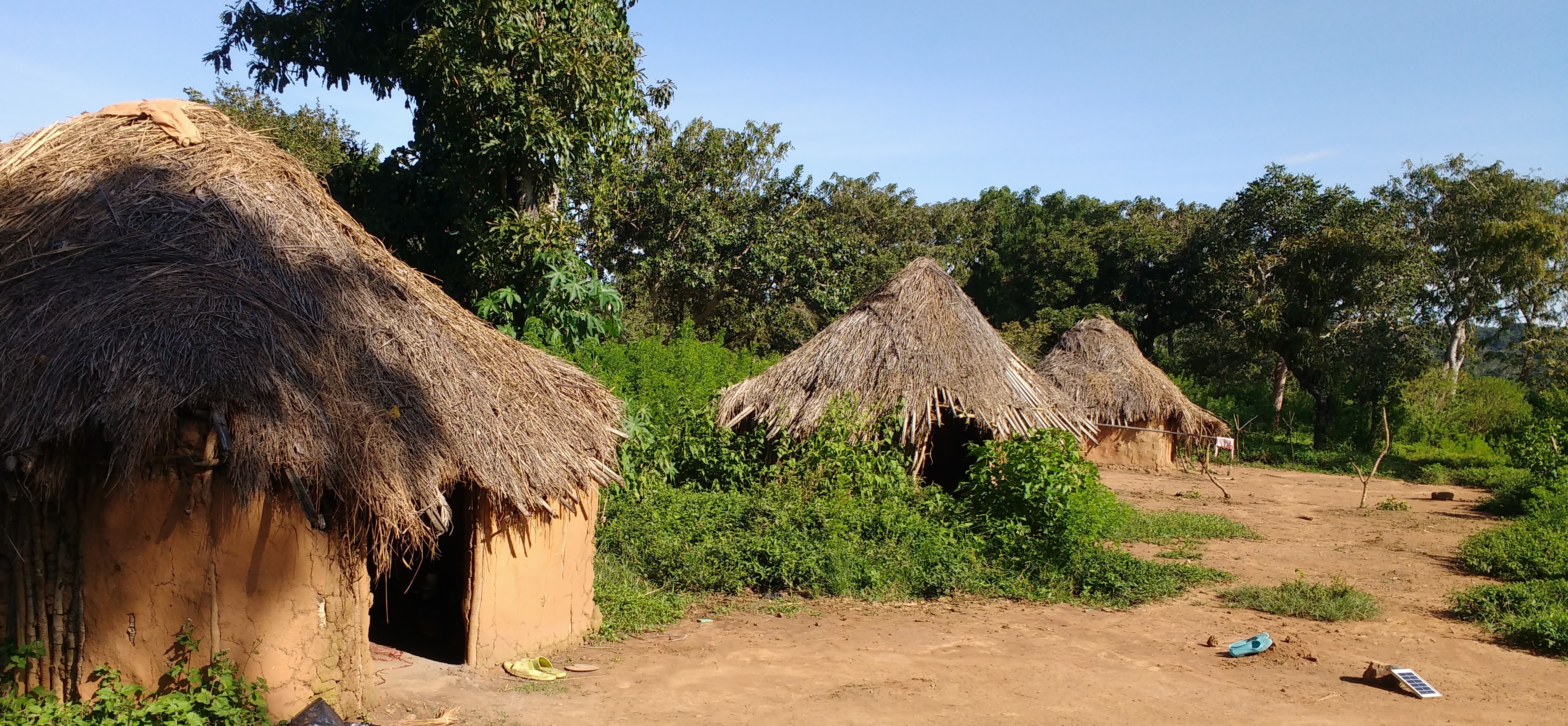
Sightsavers
We use the ArcGIS System to help locate communities at risk from preventable blindness, and treat them. We also share our findings and insights with multiple stakeholders through our Open Data Portal.
Nearly half of visual impairments can be treated or prevented. But many communities at risk of the neglected tropical disease (NTD), river blindness, are in highly inaccessible areas of sub-Saharan Africa. Since 1950, the charity Sightsavers has been preventing sight loss around the world. They are now using ArcGIS to locate and treat nomadic at-risk communities and share their findings with local government, humanitarian and medical organisations.
Satellite imagery is used with ArcGIS Pro and ArcGIS Explorer to inform more impactful treatment programmes.
Fieldworkers have access to identified routes to reach remote locations, allowing them to work more quickly and efficiently.
Transparency and knowledge sharing are made possible through ArcGIS Online and an Open Data Portal, configured with ArcGIS Hub.
The Challenge
NTDs are parasitic and bacterial infections, some of which can be a major cause of blindness. River blindness, or onchocerciasis, is an NTD spread by the bite of infected blackflies that breed in fast-flowing rivers. 205 million people are at risk of contracting river blindness which, if untreated can result in permanent loss of sight.
As well as pain, blindness and the associated stigma, river blindness causes people to move away from fertile river valleys; they end up struggling to find areas to farm or grow crops, pushing families and communities into poverty.
The flies that spread the disease become re-infected from untreated groups of people, bringing the disease back. Yet this disease is preventable, can be treated, and even eliminated.
More than 99% of those infected live in sub-Saharan Africa, often in conflict zones and rural, inaccessible areas. Of particular concern are previously unknown and unreachable nomadic communities who do not have the knowledge of or access to the treatments that can prevent irreversible blindness.
Sightsavers is determined to eliminate avoidable blindness and support equal opportunities for people with visual impairments and other disabilities. Finding the most efficient and reliable means of locating, reaching and offering nomadic communities the opportunity to participate in their treatment programme, is one of the charity’s biggest challenges.
“Taking an innovative approach to fighting disease is at the heart of our mission. Using ArcGIS has helped us to not only locate and treat those at risk in the field, but also monitor treatment progression and communicate our projects’ vital findings and success more widely.”
Alexandre Chailloux, Research Associate: Spatial Analysis, Sightsavers
The Solution
Sightsavers has worked with ArcGIS since 2013 and, having worked with Esri’s Professional Services team and undertaken a number of training courses, now uses GIS across multiple departments to solve different problems.
To address this specific challenge, the charity has developed a tailored approach to better reach these nomadic communities. This includes using nomadic guides and local drug distributors, creating materials in the local language, and exploiting satellite imagery to find where camps are located. Many of these camps are so remote they are only accessible by motorbike or by foot.
Access to hi-res imagery from Esri’s Living Atlas identifies the location of potential settlements which are categorised as “Probable” or “Less Probable”. Using ArcGIS Pro these findings are then compared with the most recent satellite imagery available to update the results.
Using ArcGIS Explorer, route locations to settlements are identified and downloaded onto mobile devices to help fieldworkers visualise where camps are located. Importantly, the App can be used even in areas where there is no network coverage. Dashboards visualise the movement of guides in the field to monitor the progression of treatment and ensure that all fieldworkers are safe.
This GIS-led approach has already helped Sightsavers to identify a number of nomadic settlements which were previously totally unknown to local guides. On one programme 85% of the “Probables” were identified as actual settlements, as were 29% of the “Less Probable”. These research findings in conjunction with local knowledge and expertise are now being used to refine the search criteria methodology to further enhance the accuracy of future initiatives.
Furthermore, Sightsavers is transforming how it is engaging and collaborating with staff, stakeholders and broader communities through its Open Data Portal. Configured using ArcGIS Hub, ‘MyPortal’ enables anyone interested in Sightsavers’ work with NTDs to download publicly accessible NTD data tools and resources, view its library of NTD StoryMaps, and explore an interactive map of its research activities.
“Out in the field we need to verify if camps previously identified by satellite imagery are actual camps where nomads live. With ArcGIS tools we can reach these communities more quickly, census the camps and then prepare people for treatment; we don’t want to leave anyone behind.”
Kareen Atekem, Research Coordinator, Sightsavers
Benefits
Effective planning
ArcGIS Pro enables the spatial analysis team to manipulate and assess satellite imagery to define the most probable areas where remote and previously unidentifiable communities are located. This can be quickly and efficiently achieved and, using ArcGIS Explorer, precise routes are downloaded to mobile devices, so fieldworkers can reach and treat those in need, more speedily.
Increased Efficiency for Fieldworkers
Despite often being offline fieldworkers have clear guidance and routes as to how they can reach isolated and often remote locations communities, as quickly as possible. Dashboards monitor their progress, back in the office, keeping everyone updated on progress.
Transparency and Knowledge Sharing
The Open Data Portal was easily configured using ArcGIS Hub and acts as a transparent community engagement platform. Communication and collaboration are maximised with stakeholders. Data and findings are more broadly shared, internally, and externally, helping to improve outcomes. Featured StoryMaps provide visually impactful, compelling stories which further extend outreach and advocacy and act as educational tools while delivering vital information in an easy to absorb manner.
Helping the Vulnerable
The use of GIS by humanitarian services helps organisations to work more efficiently and, for Sightsavers, deliver life-changing treatments to those at risk. Using satellite data to research different treatment areas and aligning results with treatment programmes, informs decision making and makes a positive impact on avoidable blindness.
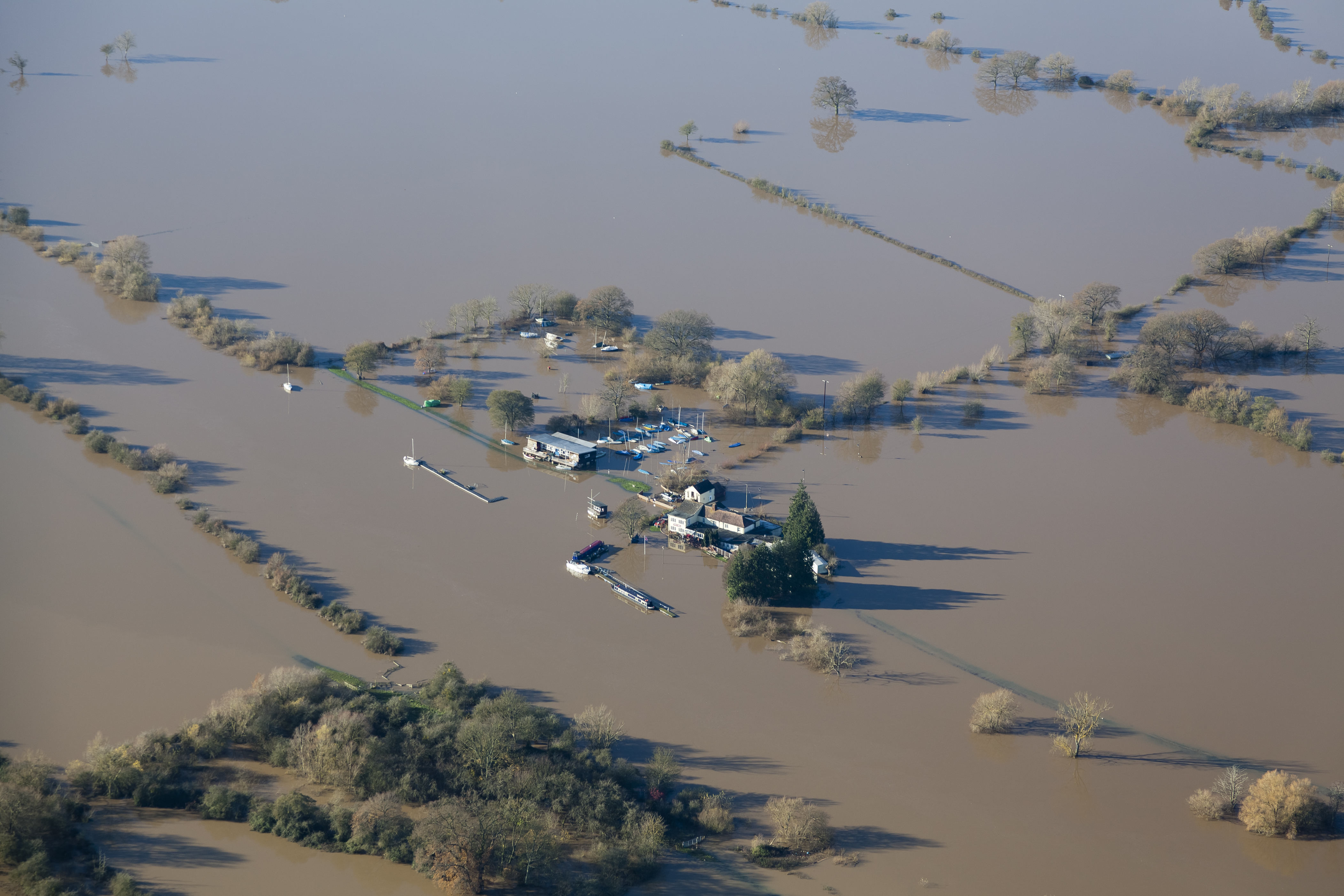
Severn Trent
Through our use of ArcGIS Hub Premium, we have delivered a wastewater industry first, creating our DWMP Hub which is empowering stakeholders and organisations to digitally collaborate on the key challenges around wastewater and flooding
As our drainage and wastewater systems face ever increasing pressures they need to become more resilient. Whilst sewerage companies already carry out wastewater catchment planning to mitigate future risks, these wastewater assets interact with other drainage systems, which are the responsibility of other stakeholders. To support the development of long-term collaborative catchment strategies, sewerage companies are developing Drainage and Wastewater Management Plans (DWMP). In an industry first, Severn Trent has developed an innovative, digitised approach for multiple flood risk management stakeholders to work together, through an interactive, map-centric platform based on Esri’s ArcGIS Hub.
Digital engagement increases participation and drives collaboration
Solution was quick and easy to set up, a seamless extension of the existing GIS
Content is easily shared and published out to stakeholders supporting strategic decision-making
The Challenge
In May 2018, some areas of Birmingham and the West Midlands experienced over a month’s worth of rainfall in one hour. This was not an isolated event. As a result of climate change, extreme weather conditions are becoming more frequent and more intense, and the nation’s drainage systems need to adapt to cope.
The requirement for new housing to accommodate population growth is set to add even more water to the current systems, as well as the surface run-off from this new infrastructure. Ambitious Water Quality requirements for England’s rivers mean that wastewater will need to be treated to a higher standard. Customers and stakeholders also expect continuous improvement in the level of services that Severn Trent provides.
Responsibility for managing such intense rainfall events and surface run-off is split across several organisations, with Lead Local Flood Authorities responsible for water above ground, the Environment Agency responsible for main river flooding and the sewerage companies responsible for the rainfall which overloads wastewater capacity. All risk management and environmental organisations therefore need to look at collaborative ways to improve the development of catchment strategies and plans such as the DWMP.
Previously, Severn Trent would invite organisations and stakeholders across all areas of its wastewater network to attend a series of in-person, interactive workshops. The advent of COVID-19 lockdown restrictions meant that these meetings were no longer possible. What Severn Trent needed was a means to engage with its stakeholders in a socially distanced fashion, where they could provide their input in a structured way.
“Setting up the DWMP Engagement Platform with ArcGIS Hub has been great. It’s intuitive to work with and easy to set-up, visually engaging and easy to access. We can now get everyone in a room, digitally”
Jack Robinson, Strategic Catchment Planner, Severn Trent Water
The Solution
In an industry first, Severn Trent has developed the DWMP Stakeholder Engagement Hub, a multiple-party engagement platform. A seamless extension of its own in-house GIS system, the DWMP Stakeholder Engagement Hub is based on ArcGIS Online and ArcGIS Hub Premium, digitising the previous face-to-face approach.
The company has been a long-standing customer of Esri since 2007 and this latest advancement came about from discussions with Esri around the specific requirements of the DWMP, and how the business could present it to its stakeholders, engage with them and solicit their feedback before considering strategic options.
All or most of the data needing to be embedded in the DWMP already existed on premise or on GISSTOnline, Severn Trent’s ArcGIS Online platform. The team simply needed to configure the data into presentable information products, ie maps, dashboards and surveys, and embed it into their DWMP Hub initiative.
The Hub enables Severn Trent to engage with local stakeholders in a socially distanced fashion. Engagement with stakeholders is done in a very structured way and it has direct control over how stakeholders can access the DWMP information and how stakeholders can submit their input. The data presented in the Hub comes directly from the company’s core systems on top of the common geography, and the feedback comes in pre-defined forms which makes follow-up modelling much easier. Users simply log into the Hub and can make their input in as little as ten minutes.
Severn Trent was aware that other organisations are facing constant resource challenges which had been exacerbated by the ongoing pandemic and so wanted to ensure the Hub was simple to use, with flexibility to allow stakeholders to access the Hub at a time to suit their busy work schedule.
The uptake has already been significant, seen as an important marker of success, given there is no statutory obligation for stakeholders to respond. The first consultation was shared with over 200 stakeholders with an uptake of almost 50 per cent, an unprecedented figure. Previously, no more than 25 per cent of stakeholders would have attended a face-to-face meeting, meaning the company now has twice as much data from initiating this digital approach, which will ultimately enable Severn Trent to identify the most impactful options across all types of drainage.
“If we can work with organisations more collaboratively to identify how to solve possible flooding issues, then we can potentially solve other problems. Digitising the process with ArcGIS Hub has not only made this possible but has many other crossovers that it could lend itself for in the future.”
Paul Hurcombe, Strategic Asset Manager, Severn Trent Water
Benefits
Speedy set up
The DWMP Hub was quick to set up, as all or most of the data already existed in the company’s ArcGIS Online account. The data was easily configured into visually engaging maps and dashboards, its UI design being acknowledged as a key element in the Hub’s success.
Digitising data collection
Severn Trent has exact control over how stakeholders can access the DWMP Hub empowering feedback in a more structured way. Stakeholders can submit their feedback digitally, rather than having to travel to and attend meetings out of the office. Since inception, responses have more than doubled.
Sharing of Information
With feedback coming through in predefined forms, follow-up modelling by the Severn Trent team is much quicker. This content can then be presented as the Drainage and Wastewater Management Plan and published out to stakeholders and other parties including Ofwat. It is Severn Trent’s intention that this Hub platform will ultimately be used to share the findings of the DWMP process, with the draft being published for consultation in Summer 2022.
Collaborative approach
Bringing together invested stakeholders digitally and identifying ways in which to solve flooding and wastewater issues, drives participation and engagement. Presenting information via charts and maps makes it easier for everyone to have a shared understanding of the goal, which can pave the way to action and potentially solving other problems.
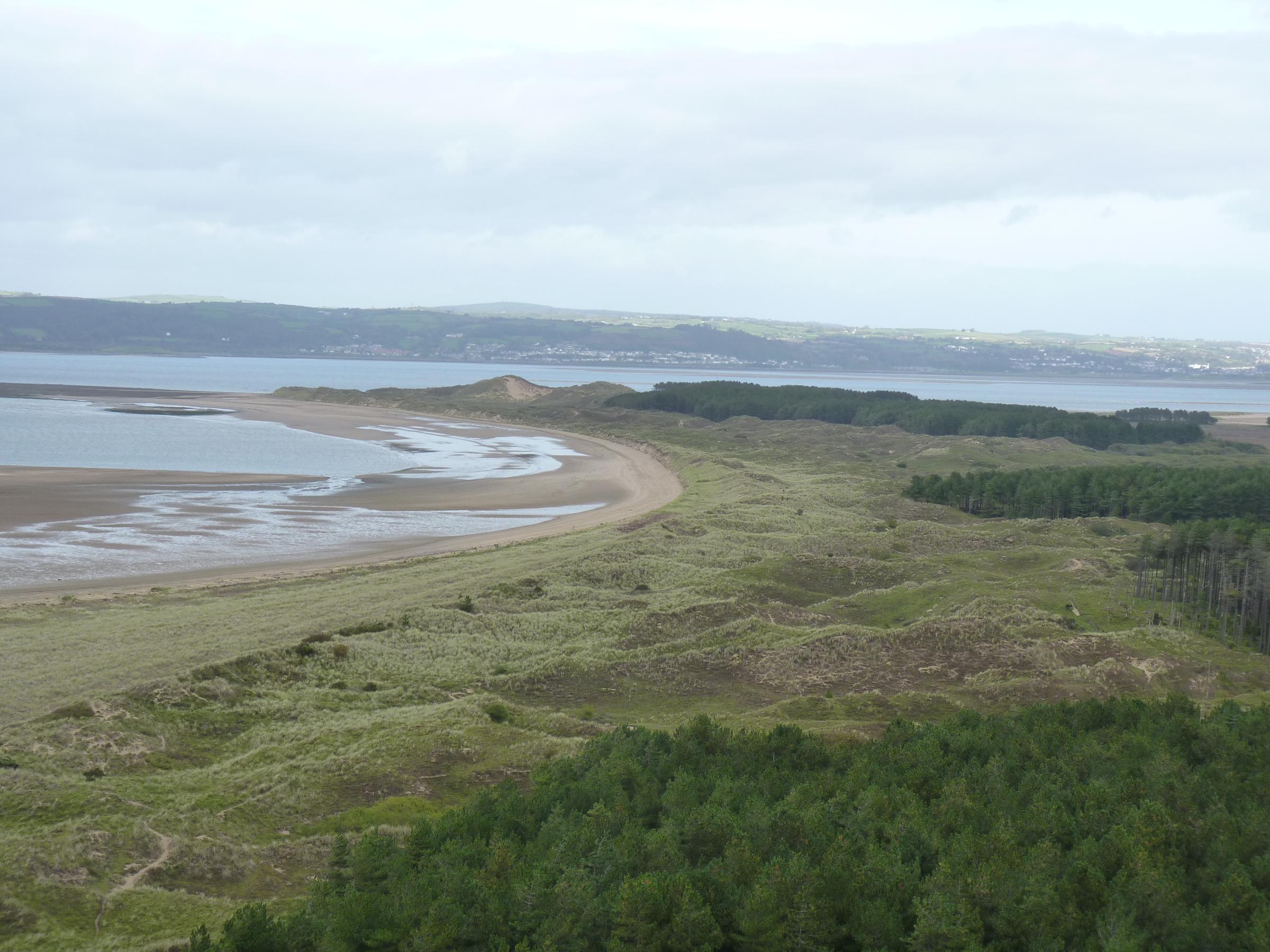
Natural Resources Wales
We can now capture detailed, accurate data with drones and analyse it to better monitor environmental changes and improve the sustainable management of Wales’ natural resources.
Many of the most picturesque and precious natural environments in Wales are vast in size, hard to reach and therefore incredibly difficult to survey. To enable accurate evidence about environmental changes and conservation projects to be collected cost-effectively and quickly at these remote locations, Natural Resources Wales now uses ArcGIS Drone2Map.
Drone2Map simplifies the processing of drone images and creates a single orthomosaic aerial image
Employees use ArcGIS web apps to view and analyse orthomosaic images at their desks and in the field
New insight into environmental changes and issues is shared internally and externally in ArcGIS Story Maps
The Challenge
Natural Resources Wales is responsible for ensuring that the environment and natural resources of Wales are maintained, protected and used in a sustainable way. One of the organisation’s key roles is to gather and share evidence about the environment, which can then be used to inform vitally important decisions about conservation projects, land management and government policy.
Capturing this evidence is, however, not always easy. Some mountainous and coastal areas of Wales are very hard to reach, while others are so vast that they are too big to survey on the ground using traditional methods. Natural Resources Wales wanted be able to capture evidence efficiently at these large, remote sites, as well as find a more effective way to monitor environmental changes over time.
“Drone2Map enables us to gain high quality evidence about a wide range of different environments, very quickly, which leads to better management of natural resources.”
Adam Burke, Lead Specialist Advisor, Geospatial, Natural Resources Wales
The Solution
Fortunately for Natural Resources Wales, a cost-effective solution was at hand. The organisation already had a number of drones and Civil Aviation Authority (CAA) approved drone pilots, who previously had just taken imagery for promotional materials. It also had access to Esri’s ArcGIS Drone2Map solution, through its ArcGIS Enterprise license, and over eight years’ experience of using ArcGIS solutions. “It made sense to make better use of the skilled resources, equipment and software that we already had,” says Adam Burke, Lead Specialist Advisor, Geospatial, at Natural Resources Wales.
Following a successful pilot at Whiteford Bay, Natural Resources Wales now makes extensive use of drones to capture evidence at coastal and upland sites right across Wales. Drone2Map enables Natural Resources Wales to stitch its drone-captured pictures together, very quickly and precisely, creating an orthomosaic image of vast landscapes. The organisation can then easily analyse the data captured in the orthomosaic image, along with base mapping and other data, using ArcGIS Pro and ArcGIS Online, to monitor change and gain fresh insight into environmental issues.
The tight integration of Drone2Map with other ArcGIS solutions also makes it very easy for Natural Resources Wales to make its newly-captured environmental evidence available both internally and externally. For example, the organisation uses ArcGIS Online to create Story Maps that embed drone-captured images, enabling it to engage with the public in a new way. It also creates ArcGIS web apps that provide employees with simple tools for analysing and exploring orthomosaic images, from their desks or on mobile devices while in the field.
“We could respond quickly to the storm damage, because we had rapid access to the most accurate, up-to-date imagery of the environment.”
Adam Burke, Lead Specialist Advisor, Geospatial, Natural Resources Wales
Benefits
Well-informed decisions about managing natural resources
Through its use of Drone2Map, Natural Resources Wales has been able to introduce a brand new method of gathering reliable evidence that can be used to inform environmental decisions. Drone2Map is, for example, now playing a key role in Wales’ first national peatland action programme, where it is being used to gather data about upland peat bogs that are hard to reach on foot. New evidence about erosion and drainage is being amassed that will help to inform sustainable management and restoration plans for blanket and lowland peats. Burke says, “Drone2Map enables us to gain high quality evidence about a wide range of different environments, very quickly, which leads to better management of natural resources.”
Enhanced understanding of changes in the environment
Natural Resources Wales gains significant benefits from being able to capture drone footage of the same site at regular intervals and then analyse the data to detect and better understand changes in the environment over time. This is particularly important for the Sands of Life project, a £4 million conservation scheme to restore sand dunes that are constantly shifting due to the movement of the wind and tides. Drones can be used to survey hundreds of hectares of dunes on a regular basis, helping environmentalists to identify which dunes are retreating fastest and where best to introduce intervention measures such as fences and trenches.
Rapid responses to environmental events
If something unexpected occurs, Natural Resources Wales can now use its drones and Drone2Map to collect data about the incident very quickly, rather than having to engage an external contractor to complete a drone survey and wait weeks for the report. When storms caused unexpected erosion at Whiteford, the organisation used Drone2Map to see how much had been lost on the frontal dunes.” “We could respond quickly to the storm damage, because we had rapid access to the most accurate, up-to-date imagery of the environment,” says Burke. “When the conditions are right, we can achieve near real-time data capture.”
Cost efficient monitoring of intervention programmes
Because the new method of collecting evidence is highly cost efficient, it can be used in a broad range of projects, including monitoring the success of intervention programmes. At Pontarddulais near Swansea, Drone2Map has been used to help Natural Resources Wales monitor the construction of a flood storage reservoir and the installation of new habitats, including a wetlands area, over 3000 trees and shrubs, a pond and improved grassland. The organisation will continue to use Drone2Map at this site to monitor the ongoing development of the new natural environment and measure the success of the scheme in improving biodiversity, while reducing flood risks.

42 Engineer Regiment
At a time of national emergency, 42 Engineer Regiment used GIS to help the Government make critical decisions
Throughout the coronavirus pandemic, 42 Engineer Regiment (Geographic) provided a single source of trusted data about all aspects of the national healthcare crisis, as well as specialist geospatial data analysis services. In fulfilling this role the Regiment helped the Government, local authorities and healthcare organisations to make the best possible decisions to protect the NHS and save lives.
Planners at multiple agencies and organisations collaborate using a common web-based GIS data viewer
Military teams survey potential sites for NHS Nightingale Hospitals and COVID-19 test centres using a mobile GIS app
Geospatial experts and novices alike undertake data analysis and create maps for public communications
The Challenge
When COVID-19 reached the UK in early 2020, there was a pressing need for shared data to inform critical decisions. 42 Engineer Regiment (Geographic) was therefore deployed to provide policy makers with a Common Operating Picture (COP) of the rapidly evolving healthcare emergency.
Over a thousand people were involved in planning the UK’s response to the pandemic – from the Cabinet Office and national government, healthcare agencies, local authorities, the police and military. 42 Engineer Regiment needed to provide a platform for sharing a single, trusted version of the truth across all these agencies. It also had to be able to analyse this vast reservoir of data, to help the Government make the best possible decisions, including where to set up NHS Nightingale Hospitals and COVID-19 testing centres.
“The online GIS platform helped lots of different organisations to work together to make the big decisions about how the UK responded to the pandemic.”
Captain Luke Parker, Strategic Command
The Solution
Building on its experience of using geospatial information system (GIS) technology in humanitarian efforts, 42 Engineer Regiment created a secure, web-based data viewer using Esri’s ArcGIS Online solution. The skilled team of geospatial analysts identified key data sets to share via the viewer and liaised with numerous organisations to unblock access to additional data, previously not available in the public domain.
Using this invaluable resource, 42 Engineer Regiment then began undertaking a vast amount of multi-criteria decision analysis (MCDA) to give Government policy makers the information they urgently needed to help them make decisions. In particular, the Regiment identified potential sites for COVID-19 testing centres, taking into account local population figures, car parking, transportation access, the size of the site and distance from residential areas. It also evaluated the optimal locations for NHS Nightingale Hospitals, how best to evacuate COVID-19 patients from remote areas such as the Outer Hebrides and how to move mobile testing teams around the country as quickly as possible.
In tandem, the Regiment used Esri’s mobile survey solution, Survey123 for ArcGIS, to enable accurate, consistent data to be rapidly collected in the field. Military Assessment Teams (MATs), comprising engineers, medics and logistics experts, used the app when visiting potential sites for Nightingale Hospitals to collect information on everything from potential bed capacity to the feasibility of laying oxygen pipes. All the data was uploaded immediately and automatically from the field to the central viewer, giving planners instant access to the information they needed to make rapid decisions about whether or not to use this site.
42 Engineer Regiment also provided vital geospatial analysis support to the Joint Biosecurity Centre and used Esri’s ArcGIS Pro to produce maps showing regional variations in COVID-19 cases and deaths. These maps were used in national COVID-19 briefings and pioneered the use of a colour palate that was suitable for people with colour blindness.
“Using a mobile GIS app for data collection was an effective way for us to confirm the situation on the ground and share this information rapidly.”
Sergeant Scott Vickery, 42 Engineer Regiment
Benefits
Effective multi-agency collaboration
42 Engineer Regiment succeeded in creating the UK military’s first ever national data platform for sharing real-time, on-demand situational awareness and analysis across multiple agencies. Used by over 1,000 people from the Cabinet Office, local and national government, police, fire service and military, the data viewer improved collaboration and created a single source of data that everyone could trust during the national emergency. According to Captain Luke Parker, a geospatial intelligence expert from Strategic Command, “The online GIS platform helped lots of different organisations to work together to make the big decisions about how the UK responded to the pandemic.”
Well-informed, objective decision making
The multi-criteria decision analysis (MCDA) that 42 Engineer Regiment was able to carry out proved critical to the process of shortlisting the most viable and appropriate sites for NHS Nightingale Hospitals and COVID-19 test centres. The Regiment’s geospatial analysts were able to accurately pinpoint the locations that would serve the largest proportion of the population, with the required transport access and resources. “Our approach enabled us to provide a data-driven and auditable way of picking the best sites for NHS Nightingale Hospitals and COVID-19 testing centres, based on an objective assessment of the location, facilities and potential of each site,” Captain Parker says.
Rapid data collection in the field
The use of a mobile data collection app significantly sped up the process of verifying the suitability of shortlisted locations for NHS Nightingale Hospitals and COVID-19 testing centres, as well as potential overflow morgues. Data collected in the field was instantly visible to everyone, across all agencies involved, within minutes. This speed supported faster decision making and enabled the construction of hospitals to commence with utmost haste, at a time when COVID-19 cases were rising at an exceptional rate. “Using a mobile GIS app for data collection was an effective way for us to confirm the situation on the ground and share this information rapidly,” says Staff Sergeant Scott Vickery, 42 Engineer Regiment.
Accurate information for government communications
Trusted by Government, the data viewer was used to produce a wide range of maps for communicating with the general public. Many of the analysis maps created by 42 Engineer Regiment were shared in the media and used on television as part of local and national briefings. 42 Engineer Regiment was, for example, able to conduct research and identify that 96% of the UK population are within 10 miles of a vaccine site. This information was shared by the Government, reassuring people that they would be able to access a vaccine, when they become eligible.


